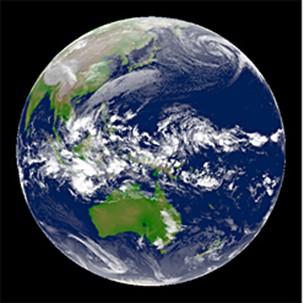Madden-Julian Oscillation Events Ride a Monsoonal Seesaw
Madden-Julian Oscillation (MJO) events are characterized by eastward-traveling anomalies of convection and rainfall lasting between 30–60 days over the Indian and Pacific oceans. Some MJO events strengthen to produce more rain as they cross the Indo-Pacific Maritime Continent (MC), while others weaken or remain relatively unaffected. Understanding the processes responsible for these variations has been difficult. One hypothesis about the variations of MJO strengths is that they are related to variations of atmospheric moisture but quantifying the moisture over the ocean is challenging because of a lack of reliable observations. Scientists at the U.S. Department of Energy’s Pacific Northwest National Laboratory (PNNL) and the National Oceanic and Atmospheric Administration (NOAA) Pacific Marine Environmental Laboratory developed a method to infer the moisture transport from precipitation. Using this method, researchers showed that variability in the strength of MJO events is modulated by the slow eastward migration of moisture convergence associated with seasonal monsoon changes.
MJO events have been linked to extreme events such as tropical cyclones and atmospheric rivers, so understanding the variability of MJO strength is a key element in international efforts to improve sub-seasonal to seasonal prediction. This study provides a framework for understanding the cross-scale interactions between intra-seasonal (MJO) and seasonal (monsoon) processes leading to the apparent spread in the strength of MJO events in the MC region, suggesting that future improvements in predicting the monsoons may improve prediction of the MJO and its global consequence.
To understand the factors controlling the variability in the strength of MJO events as they propagate across the MC region, researchers developed a method to calculate the zonal and meridional components of the MJO events’ moisture supply directly from observed precipitation. The research team showed that seasonal monsoon-related anomalies of zonal moisture flux convergence regulate the strength of MJO events as manifested in their precipitation. The monsoons start in the central equatorial Indian Ocean during the Asian summer monsoon season between June and August, migrate eastward, and end over the eastern boundary of the MC region at the end of the Australian monsoon season between December and February. Hence, depending on the season, MJO events may encounter a favorable environment of abundant moisture due to moisture convergence induced by the monsoons at different longitudes. In February, March, and April, MJO events tend to start weak over the eastern Indian Ocean, where moisture is diverged away by the Asian winter monsoon. The events strengthen as they propagate to the western Pacific, where there is moisture convergence induced by the Australian monsoon. In contrast, in May, June, and July, MJO events are most likely to weaken as they propagate from the region of anomalous moisture convergence to that of moisture divergence. While MJO events are usually strong at either the eastern Indian Ocean or the western Pacific, peak MJO strength is also observed over the MC region, particularly during strong Australian monsoon months that strengthen the moisture convergence over the MC region.

